In this blog post, we are going to give you the entire SEO checklist you should be following in 2024.
Using this checklist, paired with the process of following the five pillars of SEO, we have grown our traffic by 141% in 2024 so far.
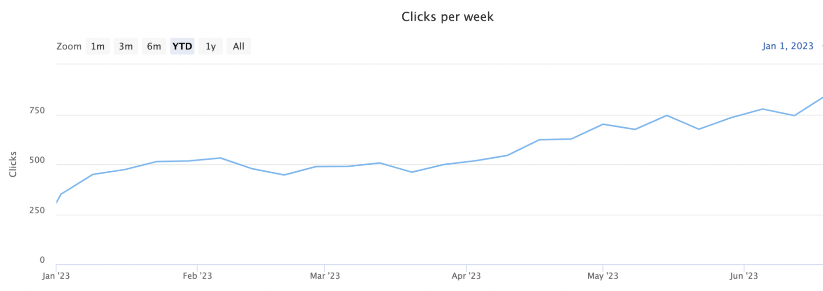
We're going to cover everything. From the basic tools you need to on-page and off-page SEO.
Getting the Basics
Before we jump into the checklist itself, we need to get some basic tools set up for you to track results.
Set-Up Google Search Console
Google Search Console is the first tool you need to set up for your website.
It's a comprehensive suite of tools and features that will allow you to understand exactly how your website performs on Google.
You will be able to diagnose issues with Google crawling and indexing your website, getting your pages indexed and ranked faster.
As Google Search Console is a web-based tool, you do not need to install anything to get it to work. But you will need to verify it with your website so it can start recording information. You can do this at the domain level or the prefix level.
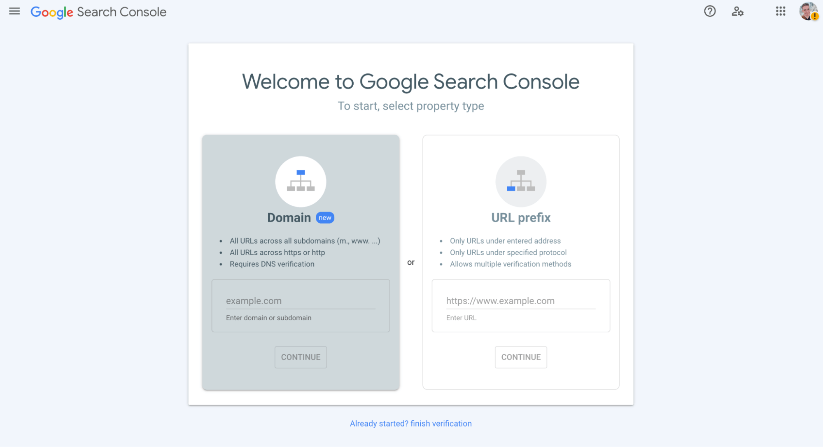
At the domain level, Google will combine all versions of your domain it finds in the results. This includes:
- Subdomains
- HTTP
- HTTPS
At the prefix level, only URLs under the entered address and under that specific protocol will be measured.
Once you have set up your Google Search Console and have been gathering data for a few months, your dashboard should look something like this:
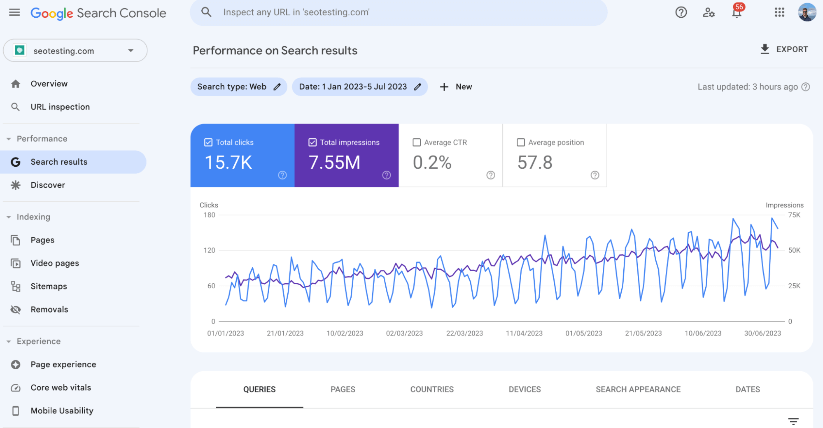
We cover much more about Google Search Console in our introduction to Google Search Console.
Set-Up Google Analytics
Similar to Google Search Console, Google Analytics (and now GA4) is an analytics tool that is capable of telling you how your website is performing in search.
Where it differs from Google Search Console, is Google Analytics is also able to tell you how your website is performing in other acquisition methods including your social media, paid advertising and referral traffic.
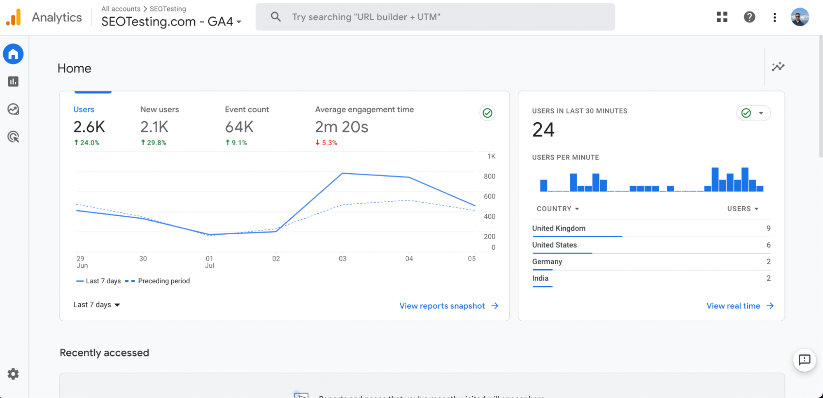
To set up your Google Analytics, you will need to fill in some basic information about you and your website. You will also need to add Google Analytics' HTML tag to the <head> section of your website. This is an incredibly simple process and will only take you a few minutes to do.
BONUS: Set-Up SEOTesting
We spoke earlier about Google Search Console. SEOTesting is a tool that will supercharge your Google Search Console data.
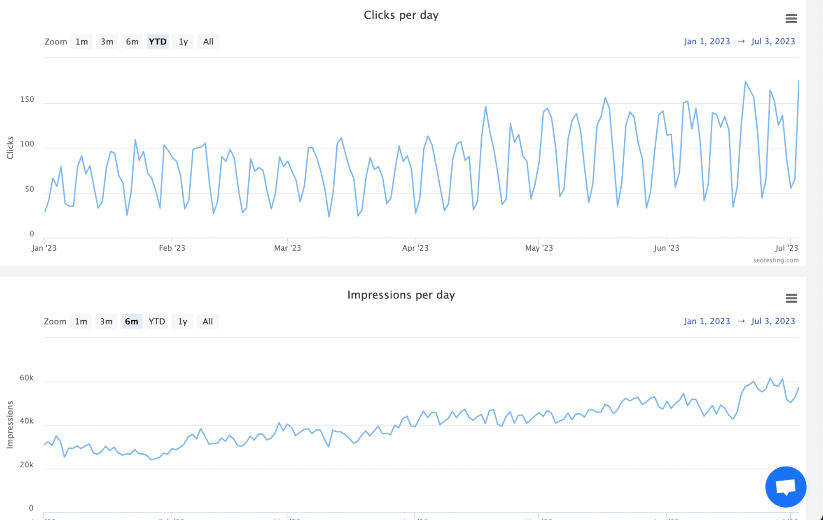
Taking its data directly from Google Search Console's API, SEOTesting will allow you to do more with that data. You can quickly see data in different date ranges, including:
- 1 Month
- 3 Months
- 6 Months
- Year To Date
- 1 Year
- All Data
Not only that, but SEOTesting also has a huge range of reports available, meaning you can make data-driven decisions, rather than educated guesses.
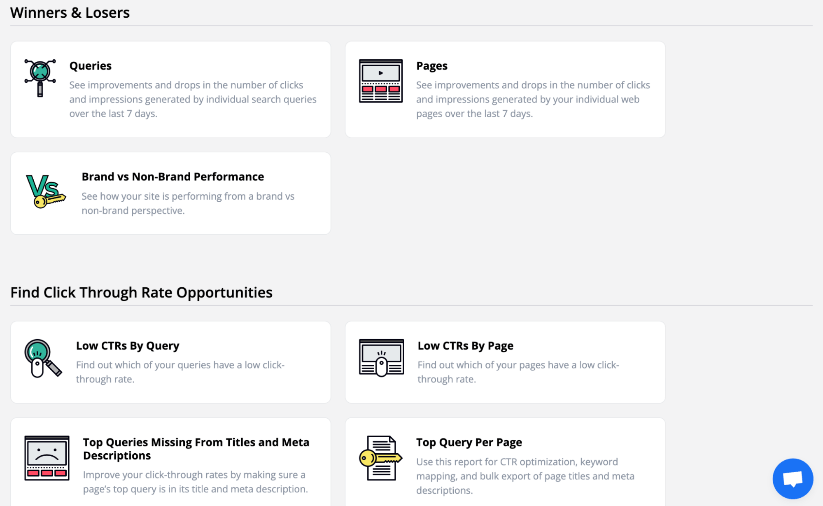
Want to give SEOTesting a try for your business? Click here to start your 14-day free trial.
Focussing on Keyword Research
Any good SEO strategy hinges on good keyword research. In this section, we will go through our exact process for finding keywords for your business to target in search.
Finding your "Head" Keywords
You first need to identify your "head" keywords. Head keywords are, essentially, short keywords that are searched often and are most often found at the very top of a buying funnel. Examples in our industry would be...
SEO Testing
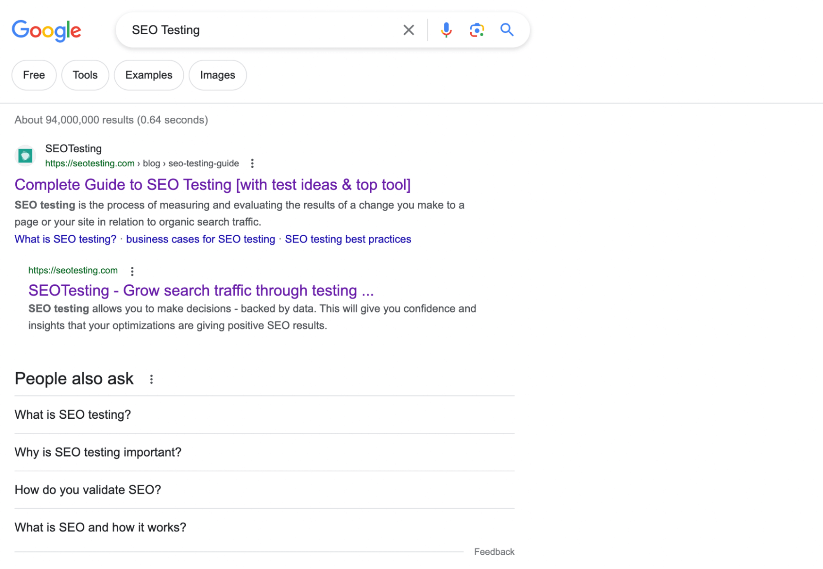
Keyword Research
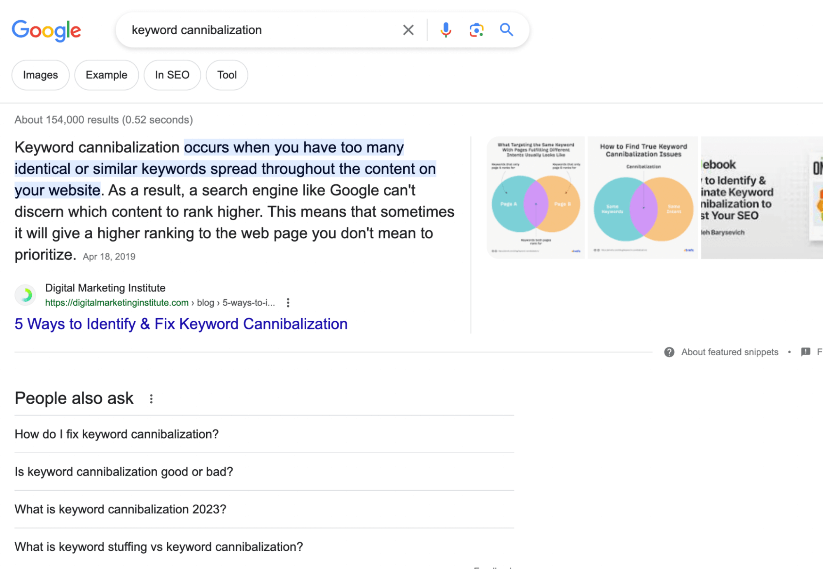
Head keywords will, generally, represent people at the start of their buying journey as they are looking for more information around a topic. There are exceptions to this, but this is a general rule that can be followed in many industries.
There are several good ways to find head keyword ideas for your business. One of my favourites is to start typing a topic into Google and see what comes up in the "autocomplete" section. This will give you head keyword ideas that are being searched by users on Google.
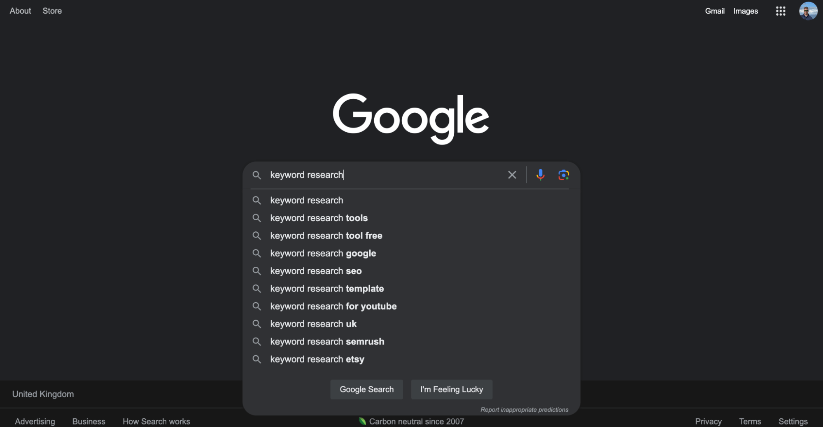
Examples of good headwords from the image above include:
- Keyword Research Tools
- Keyword Research Template
You can also use a tool like Ahrefs to identify head keywords for your business. Simply log in to your dashboard, click on the Keywords Explorer link and type in a topic your business works in. For the example below, we've used "SEO" as the keyword.
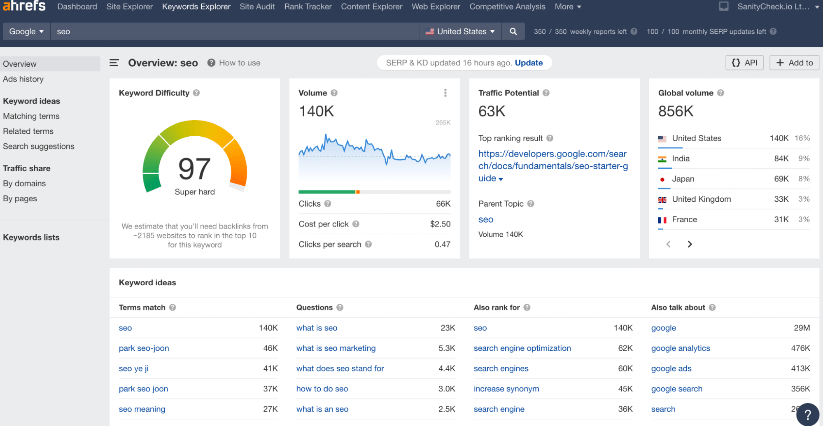
From here, we can head to the Keyword Ideas section where we can find good head keyword examples:
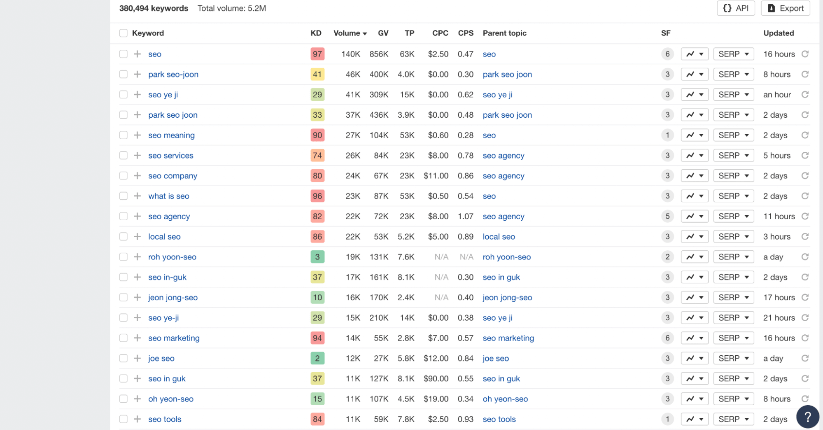
As a buyer moves further along the funnel, head keywords will become more "long-tail" in their nature.
Finding your "Long-Tail" Keywords
Long-tail keywords are longer in word count, hence the name, and signify that (in most cases) a user has moved further along the funnel. Perhaps they have moved from the awareness stage to the interest stage, or the middle of the funnel to the bottom of the funnel, depending on what customer acquisition model you use.
Some good examples of long-tail keywords in our industry include:
- SEO advice for beginners
- Specialist ecommerce SEO agency in London
- What is on-page SEO?
You can find long-tail keywords for your business in several ways. One of my favourite ways to find long-tail keywords for my business is to use the word count filter within Ahrefs' Keyword Explorer tool.
As we did before, we are going to head to their Keyword Explorer tool and start with a head keyword. In this example, we are going to use "Keyword Research" as our head keyword.
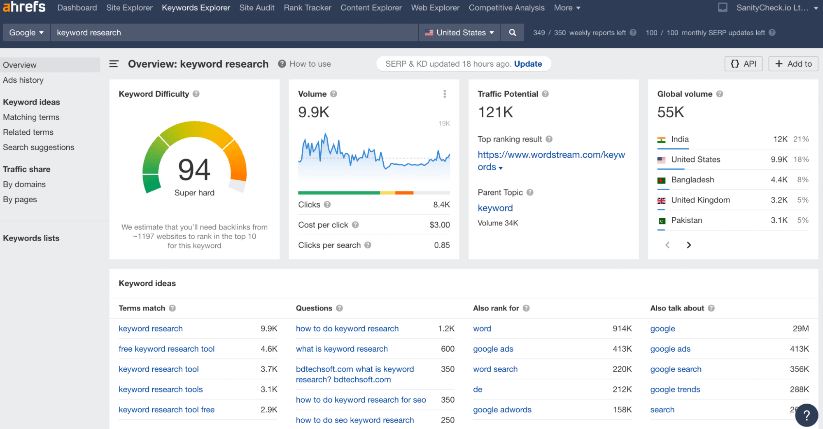
We're then going to head back to the Keyword Ideas section, only this time we are also going to use the word count filter. For this particular example, I've set the minimum number of words to 5 and the maximum to 10.
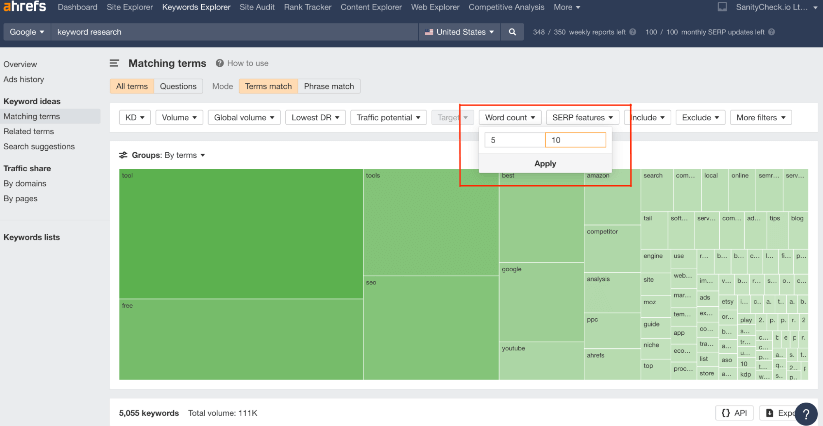
This gives us some really good long-tail keywords that we can now create content for.
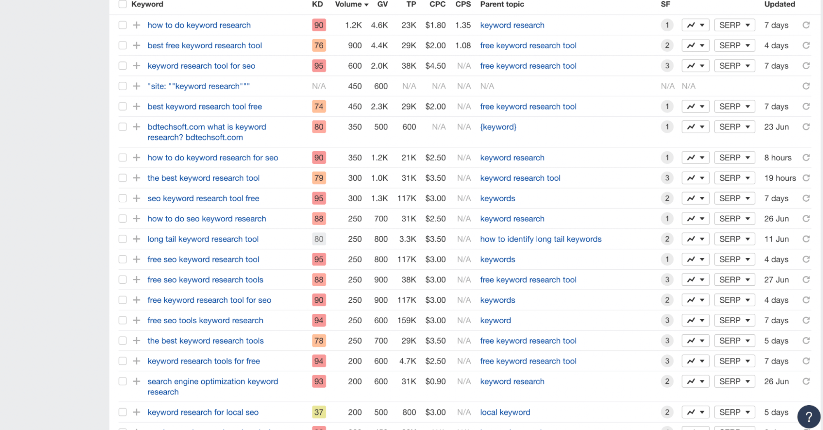
Finding Questions from the Public
Whilst using tools like Ahrefs is great, you are going to need some help from the public. To find questions that people in your niche are asking, using tools like Quora and Reddit is going to give you a wonderful advantage.
Let's use Quora as an example. Quora is a question-and-answer platform that allows users to ask questions on numerous topics and receive answers from anyone, including experts in that topic.
For this example, we've searched "keyword research" in Quora:
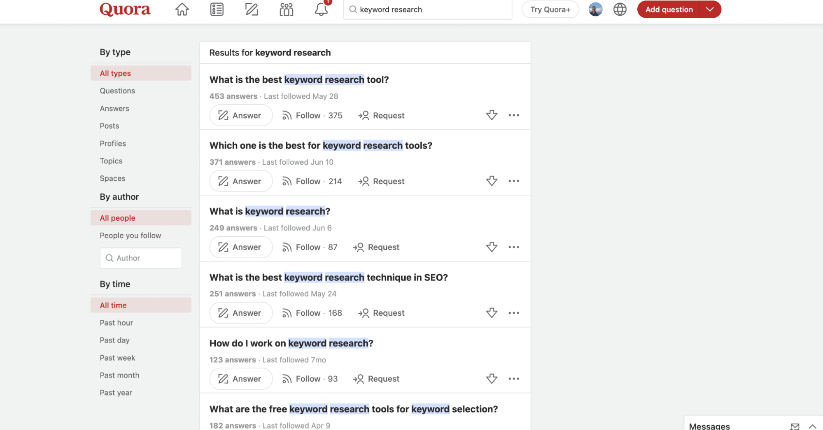
As you can see, we have a wide array of questions here from members of the public, asking questions such as:
- What is keyword research?
- What is the best keyword research technique in SEO?
- How do I work on keyword research?
These are all great questions and ones that we could consider creating content for!
Tools to Help with Keyword Research
There are several tools out there that will help you conduct quality keyword research for your business, including some that you can use for free. We have already spoken about a few of them, including Google, Ahrefs, Quora and Reddit.
There are a few other tools on the market that will also help you conduct great keyword research, whether you are searching for head keywords or long-tail keywords. These tools include:
AlsoAsked
AlsoAsked is a paid keyword research tool that allows you to start with a topic and get a list of questions usually found in Google's "People Also Ask" box. It does all the hard work for you in scraping these questions and putting them together in a neat chat.
Here's an example search:
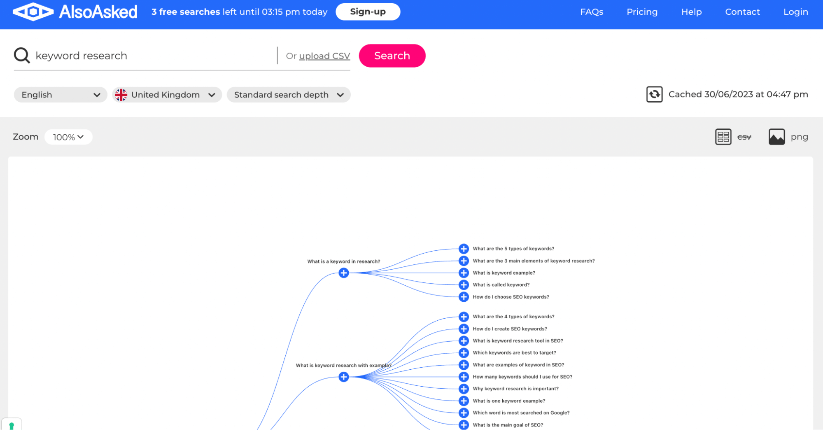
As you can see, we started with the topic of keyword research and we already have some great questions that people have been asking around this topic.
Keyword Insights
Keyword Insights, whilst not directly a keyword research tool, will allow you to save a lot of time and effort when it comes to creating content following your keyword research. It will allow you to import a list of keywords, from as little as 100 to as many as 100,000 and it will automatically place these keywords into clusters for you.
This means you'll know exactly what keywords need to be targeted with each page and you will never waste time, effort and budget on creating content that does not need to be created.
Here's an example search I ran with Keyword Insights.
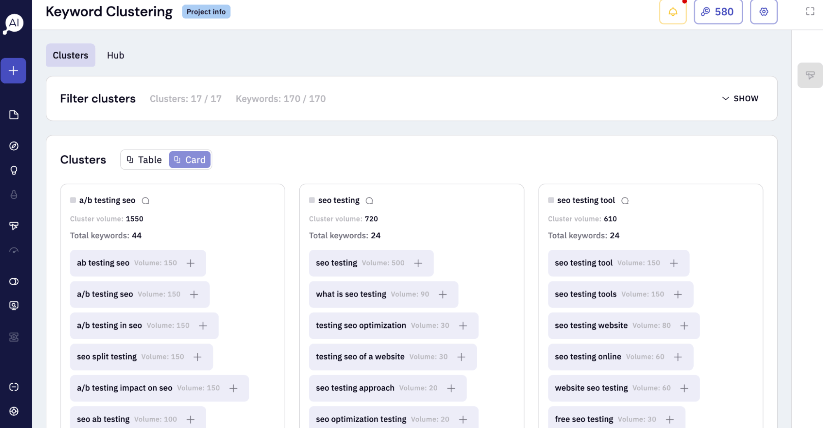
As you can see, we took a list of keywords around SEO testing and put this into Keyword Insights to be clustered for us. I can now see all the keywords that I can target with different content pieces. This is going to allow me to be more efficient with my content plan going forward.
Technical SEO Checklist
Technical SEO, in its basic form, is ensuring your website has a good technical standing so search engines can crawl, index and rank it well.
Here is our entire checklist when it comes to our website's technical SEO.
Find Issues with Crawling
To be able to index and rank your web pages, Google (and other search engines) need to be able to crawl your pages.
Google Search Console can tell you if there are any issues with Google crawling any of your pages. You can find this information in your Page Indexing report. It will look something like this:
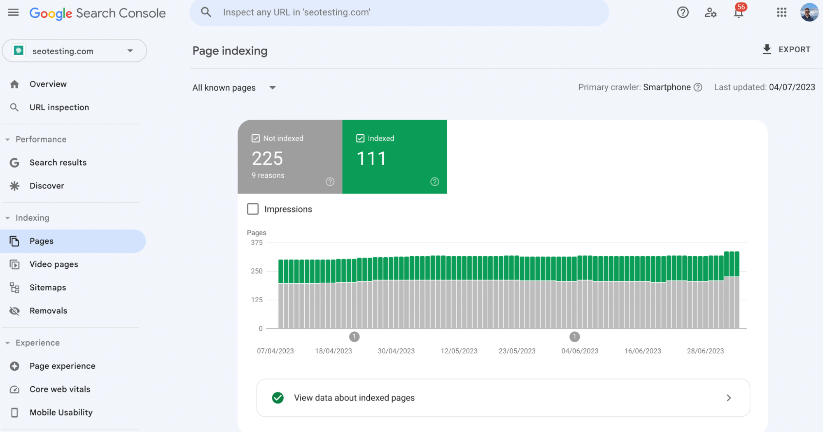
A page denoting what pages have been indexed and what pages have not been indexed. Google will also show some error codes to denote the reasons these URLs have not been indexed.
Crawl errors fall into two categories:
- Site errors: Errors which prevent Googlebot from crawling your website.
- URL errors: Errors which prevent Googlebot from crawling individual pages.
Examples of site errors will include:
DNS errors.
If Google cannot establish a DNS connection, it cannot find or access your website. Common DNS errors include timeouts, where your DNS server does not respond to Google's request fast enough, and DNS lookup errors, where Google cannot access your website because your DNS server could not find your domain name.
Server errors.
Server errors are found when Google was able to look up your URL on the DNS server, but could not load the page because of an issue with your server. Common issues include timeouts, where servers take too long to respond to Googlebot's requests, connect failed errors, which mean your server's network was down or unreachable and no response errors, where the connection with your server was ended before any response code could be sent.
Robots failure.
Robots failures occur when Google is unable to find and/or read a website's robots.txt file. Google does not want to crawl and index pages that you do not want to be ranked, so if it runs into errors with finding or reading your robots.txt file, it will delay crawling until it can read the file.
Examples of URL errors include:
Soft 404 errors.
In most cases, soft 404 errors return a 200 response code, meaning the page is readable.
Soft 404 errors occur when Google can find and crawl a page, but it finds there to be little to no content on the page itself. Google wants to provide as much value to users as possible, so if it finds any pages with no information or little information, then it may delay crawling entirely.
Not found errors.
Not found errors occur when a server responds with a 404, meaning Google has requested a URL on your site that is missing and does not exist.
Access denied errors.
Access denied errors occur when Googlebot is denied access from crawling a page. This could be because the page is password protected, pages are being disallowed by your robots.txt file or your hosting provider is blocking Googlebot.
Find Issues with Indexing
As well as finding issues with Google crawling your website, you can also find issues with Google indexing your website. Again, this can be found in your page indexing report:
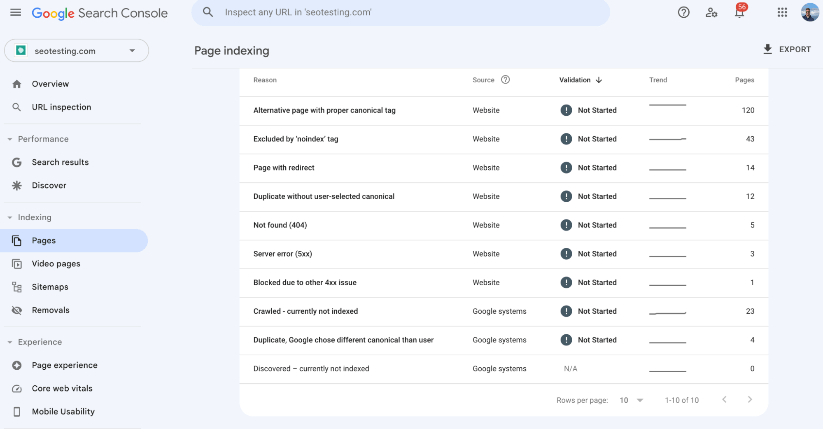
There is no way to filter these statuses within Google Search Console, you will get a list of all your errors and you will have to determine which is a crawling error and which is an indexing error.
Some common indexing errors include:
Redirect error.
A redirect error means a page has not been indexed due to a misconfiguration with a redirect. This could mean Googlebot has encountered a redirect loop, a redirect chain that was too long or a bad/empty URL path within the redirect chain.
URL marked 'noindex' error.
When Google crawls a page and encounters a noindex tag within the page's HTML, this means the page is not going to be indexed. Google, as mentioned above, does not want to index pages that you do not want to be indexed or on Google. So it will follow this noindex directive.
Crawled - currently not indexed error.
This means Google has crawled the page but has chosen not to index it. It does not give a reason for this, but we go into detail on this within our crawled - currently not indexed blog post.
Ensure your Website is Mobile-Friendly
Ensuring your website is mobile-friendly is a crucial part of a successful SEO strategy. Especially considering it is a ranking factor, that Google has confirmed.
You can find issues with pages on your site not being mobile-friendly within your Mobile Usability report:
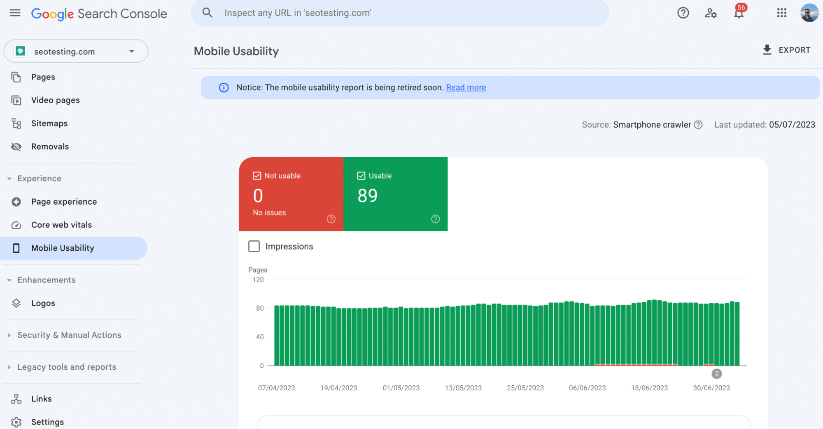
The above is a screenshot taken from our Google Search Console. As you can see, we do not have any URLs on our website that have issues with mobile usability. Which is great!
If you do have any pages on your website that are not mobile-friendly, you will be able to see that here:
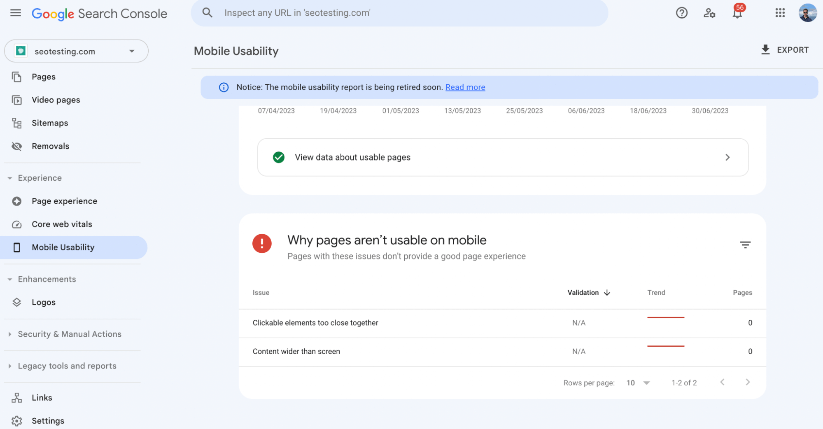
Here is where Google Search Console becomes more useful, as it will also tell you the reason why certain URLs are not mobile-friendly. Including reasons like:
- The content is wider than the screen.
- Clickable elements that are too close together.
If you have issues with mobile-friendliness, we'd recommend fixing this as soon as possible as pages that are not mobile-friendly will not be ranked above pages that are.
Fix ALL Broken Links
Broken links are a big "no-no" for SEO. They hurt Google when it is trying to crawl, index and rank your website. But more importantly, they hurt users when they are trying to browse your website and potentially buy products from you.
You need to run a crawl of your website and find all broken links.
You can do this using a site crawling tool like ScreamingFrog or Sitebulb. For this example, we'll use ScreamingFrog. Although the process is repeatable, no matter what crawler you are using.
First, run a full crawl of your website:
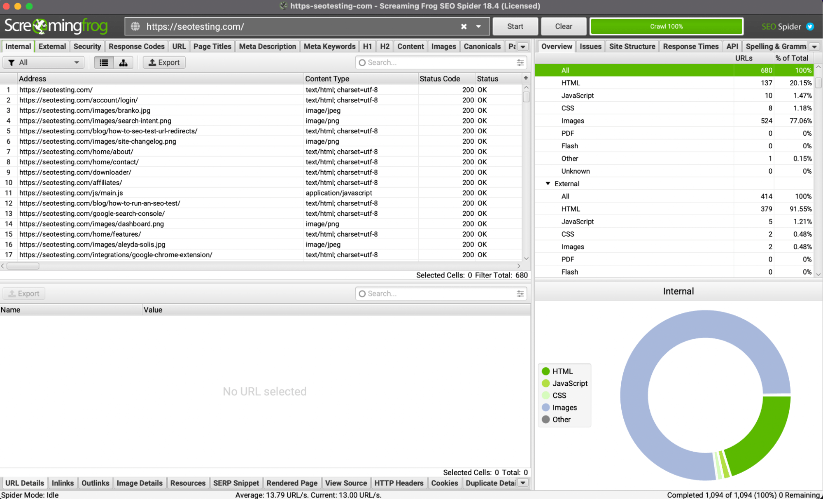
Next, you will want to click on the "Response Code" tab and filter it to see "Client Error (4xx)" response codes.
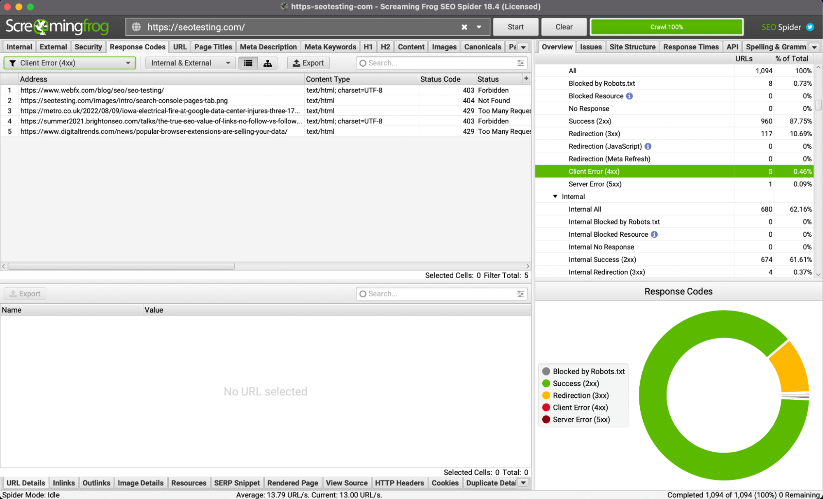
This will then filter out all other response codes and focus on response codes that start with 4. In the example above, we have:
- 2 403 errors.
- 2 429 errors.
- 1 404 error.
The goal here will be to ensure there are no 4xx codes across your site.
Note: This is going to be a relatively quick process for a website like ours with approx. 500 URLs. This can become a very time-consuming process if you have a website with over 10,000 URLs. But it is worth spending the time and fixing your broken links. You'll end up with a better user experience which will, in turn, lead to better ranking.
Secure your Website with HTTPS
We have left this point until last because it is the easiest to explain.
HTTPS is a confirmed Google ranking factor. If your website is not configured with HTTPS, you are not going to rank above competitors that have HTTPS.
Ensure your website is configured with HTTPS to give yourself the best chance at ranking.
If you haven't yet migrated your website to HTTPS, here's a guide that will take you through the process.
On-Page SEO Checklist
The next step for you to ensure you have nailed down is your on-page SEO. This includes anything on your website that users can see and interact with including your URL, images, internal and external links and more.
Here's what we do at SEOTesting to ensure our website's on-page SEO is in the best shape it can be.
Use Short URLs
It is best practice to use short URLs across your website. There are a few theories as to why shorter URLs work better than long URLs for websites including the fact that they are easier to type out, easier to remember and improve the general user experience of a website.
There is data to back this up.
This analysis, of 11.8 million Google search results found that, overall, short URLs rank better than long URLs.
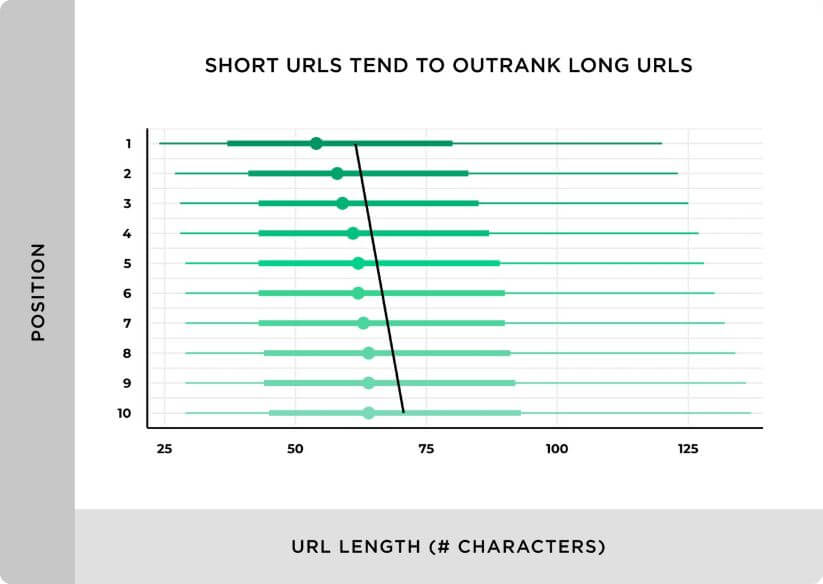
Include your Head Keyword in your URL
As with keeping your URLs short, you also need to be adding in your targeted head keyword in your URL.
Google uses a page's URL, along with the content on the page, to establish the topic of the page. So adding your head keyword to your URL is going to give it an additional chance at ranking for that chosen term.
Here's an example from our blog:
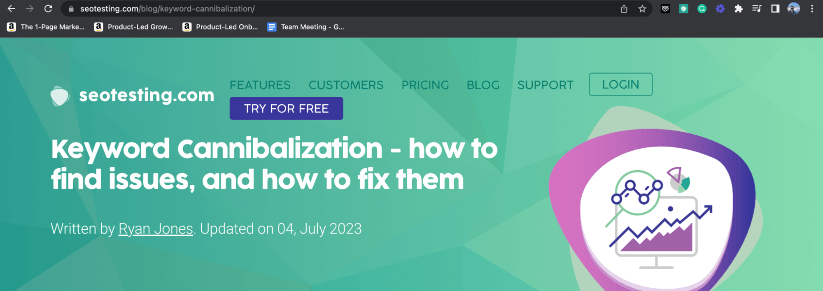
As you can see, we have written a post on keyword cannibalization and our URL is https://seotesting.com/blog/keyword-cannibalization
We are trying to target the keyword of keyword cannibalization for this blog post, which shows as we are using it in our URL and page title, as well as multiple times within the content.
Include your Head Keyword in your Page Title
Your page title is one of the first things your customers and potential customers are going to see when they click on your page. It is crucial you tell them, and Google, what the page is about quickly by including your head keyword in the page title.
It works, too. Here's an SEO test that one of our customers ran following adding two words to their page title:
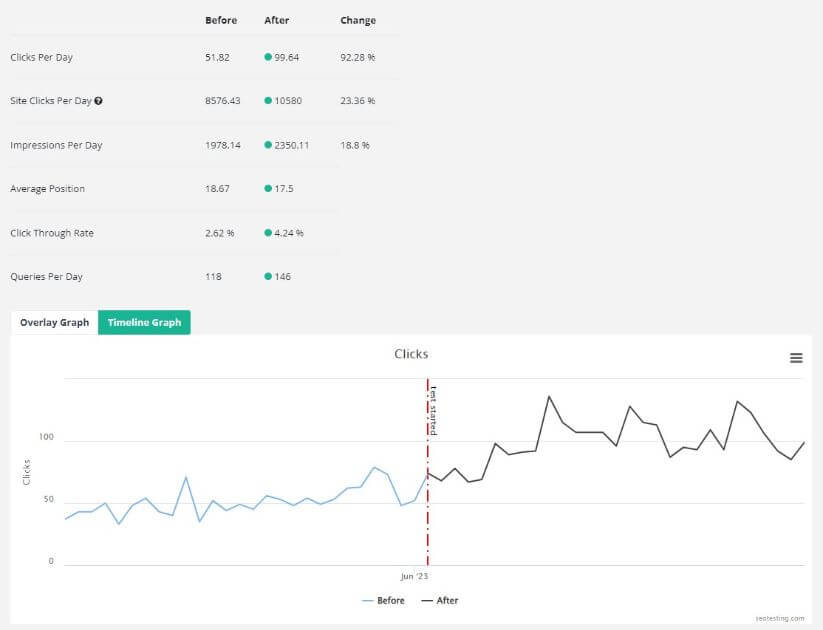
Just in case you can't see the wording on screen, that's:
- A 62% increase in Click Through Rate.
- A 92% increase in clicks per day.
- An 18% increase in impressions per day.
- The average position moved up 1, from 18 to 17.
Include Keywords in your H2, and H3 Tags
As before, with page titles and URLs, you should always ensure you are using keywords in your H2 and H3 tags where possible.
Where the difference lies is you don't necessarily need to use your head keyword here, the head keyword being the main keyword you are targeting with your page.
We talked earlier about Keyword Insights, and how by using it you can obtain full clusters of keywords that can be targeted within the same page. This area, your H2 and H3 tags, are prime examples of where you can include your additional keywords to add more relevance and ensure your page ranks for as many queries as possible.
We have a report here that can help. The Top Query Per Page report from SEOTesting will list your pages and the top query that each of your pages rank for. It will then show you, via a traffic light system, whether this query is listed in your meta title, meta description, H1, H2, H3 and page text. This is a great quick win for a lot of businesses who are trying to increase clicks and impressions.
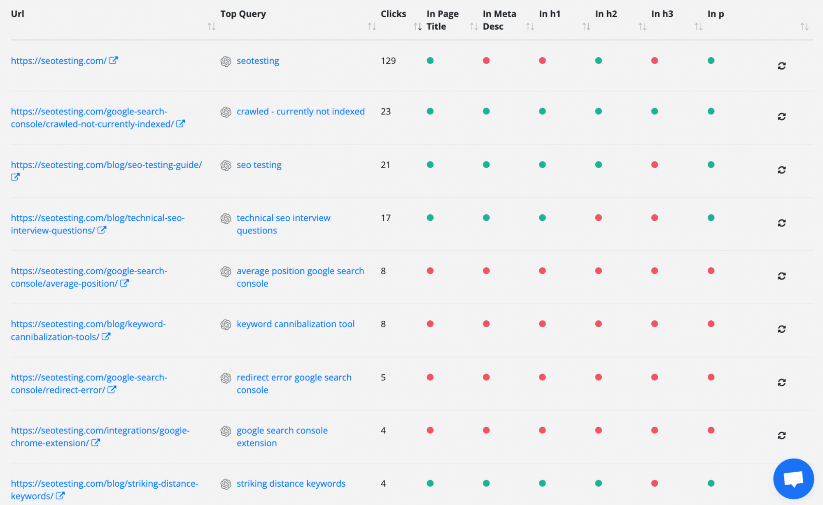
Include Internal & External Links
Links are the backbone of the internet. Adding internal and external links to your pages is going to help you in several ways. It can reduce bounce rate, keep users on your website longer, improve and maintain your website structure and much more.
Adding internal links to other content within your pages is a great way to add contextual relevance to your website and encourage visitors to click further into your website, and hopefully move them further along the funnel.
Adding external links to your website also helps. Whilst they don't help as much as internal links, they are needed when linking to sources, noting authors of content and more. A website with no external links is not an authoritative website in the eyes of users and Google.
Optimise your Images
Optimising images helps in several ways.
They help users on your website as they add more relevance to your content. They can help users understand complicated content a little more and you can use them to explain your content further.
They also help Google, however, you need to ensure you are properly optimising as Google cannot see/read images in the same way users can. This is why you need to add descriptive alt tags to all of your images as this will help Google understand the relevance of the images you are using.
You also need to ensure they have been compressed as, otherwise, the large file sizes will slow down your website.
It's also worth noting that the image names and URLs should be properly noted too to add additional reference.
Content Checklist
Moving on to content. Content is a crucial part of your SEO strategy as, no matter what business you are in and what niche you work in, people are always looking for content that your website should be putting out.
Use a Simple Structure with Your Content
We want to start with the structure of your website. Using a simple structure on your content is better for both Google and users as it makes your content easy to scan through, easy to read in full and easy to understand.
Ross Hudgens tweeted back in August of 2022 that using a simple website structure may help your website rank better.
A simple content structure could be something such as:
- H1
- H2
- H2
- H2
Whereas a bad website structure could look something like this.
- H1
- H2
- H2
- H2
- H3
- H3
- H2
- H3
- H3
You can see by comparing the two side by side, the first is much easier to understand and read through.
Here's the original image that Ross tweeted, for additional reference:
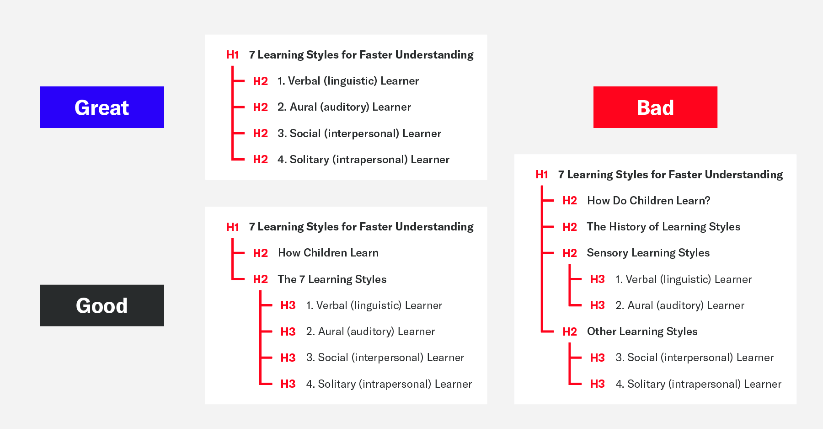
Cover your Topic Completely
This might sound obvious, but with all of your content, you need to ensure you are covering the topic completely. This process starts in the keyword research stage and should be a focus through your SEO workflow.
You can do this in several ways. You can do it by creating one content piece which covers all areas of the topic you are writing about. This can, certainly, be useful in some cases but might not be the best way to go about it given what we have already discussed about content clusters.
We'd recommend the "hub and spoke" method of content creation and organisation.
Use the "Hub & Spoke" Content Structure
The hub and spoke content structure involves creating one large piece of content, known as the content hub, which will briefly cover all areas of the topic you are writing about. You then support this with spoke content, which goes deep into the subtopics of the topic.
Here's an image from Andy at Keyword Insights which shows this content structure well.
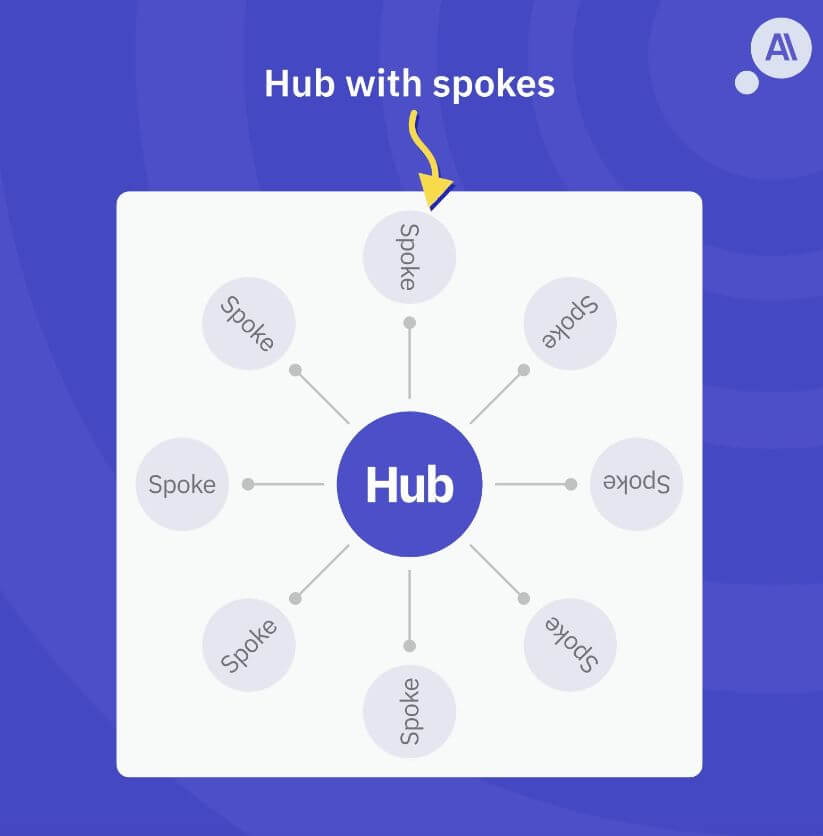
You will link, from your hub piece to each of your spoke content pieces. You will do the same, linking to your hub piece from each of your spoke content pieces. This is one of the best ways to cover topics in full and rank well for each piece of content.
Link Building (Off-Page SEO) Checklist
Now we have covered everything you can do on your website, we now need to end the article talking about the things you can do away from your website. Otherwise known as off-page SEO.
Off-page SEO is the process of building backlinks from other websites to your website, to help your website build authority within its niche.
As we mentioned before, links are the backbone of the web, so ensuring your website has lots of highly-authoritative and relevant links is crucial to SEO success.
Link Intersect
Link intersect is the process of finding and acquiring backlinks that your competitors have that your website does not have. There are a few different tools you can use to do this, but our personal favourite is Ahrefs.
Once you have logged in to Ahrefs and entered the link intersect tool, you will be presented with a screen that looks like this:
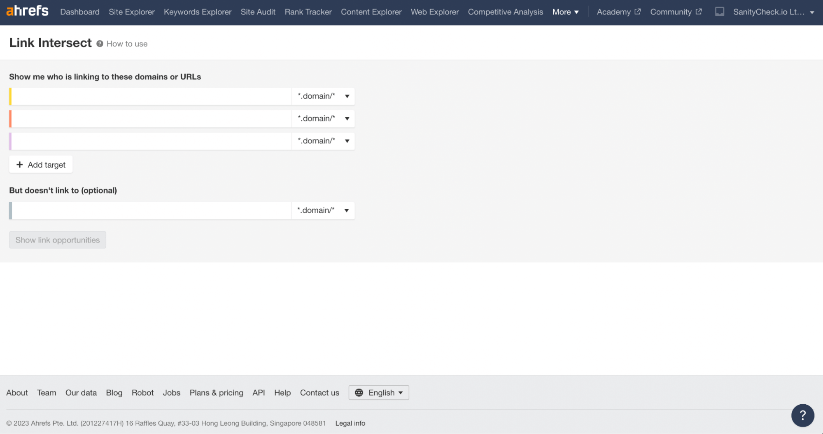
You will enter your competitor URLs in the top section and your URL in the bottom section. Ahrefs will then use their large database to find links that your competitors have that you do not:
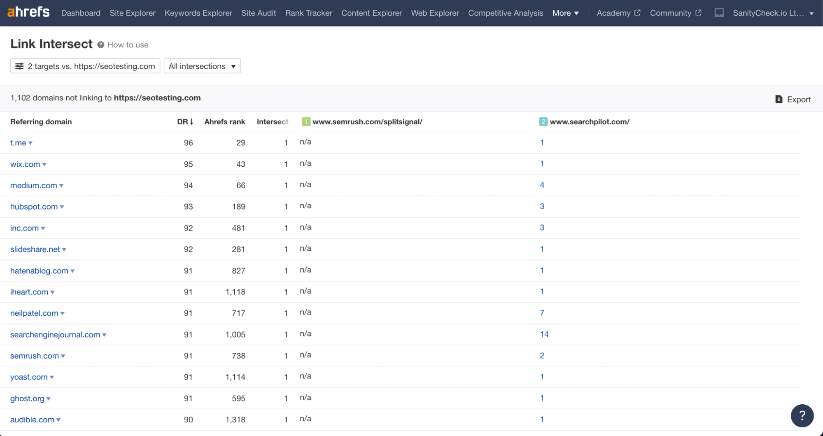
We can then go ahead and export this list and go after links from these websites.
Unlinked Brand Mentions
In theory, these are some of the easiest links to acquire. An unlinked brand mention refers to an instance where a website has mentioned your brand/product and is not linked to your website.
You can use Ahrefs to find these unlinked brand mentions.
Log in to your Ahrefs dashboard and click on the "Content Explorer" link. This will take you to a page with a search bar in the middle of the screen. You will then type in your brand name (in quotation marks) and search.
This will give you a page that looks like this:
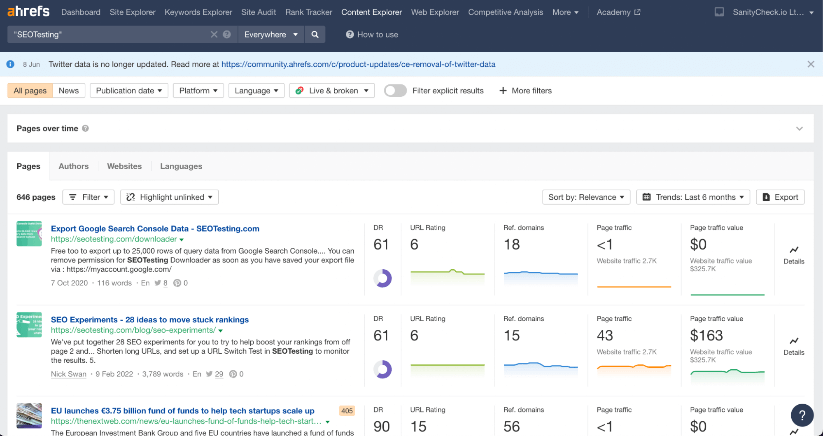
You can then click on the "Highlight Unlinked" button and enter your domain.
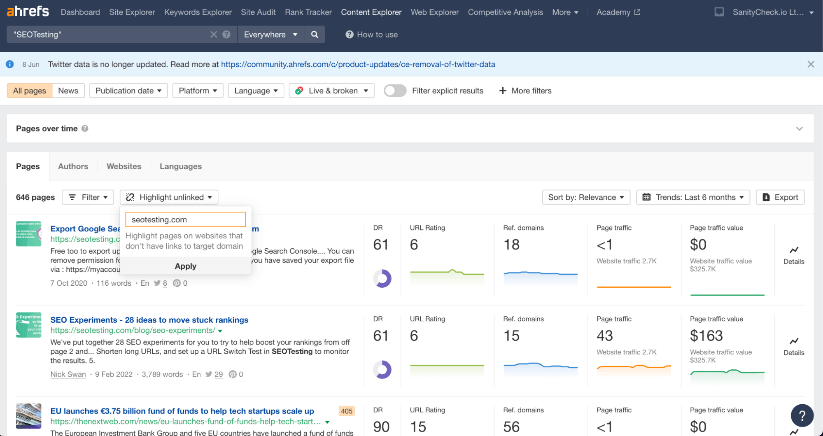
Doing this will then highlight all of the websites that have not linked to you, even though they have mentioned your brand name.
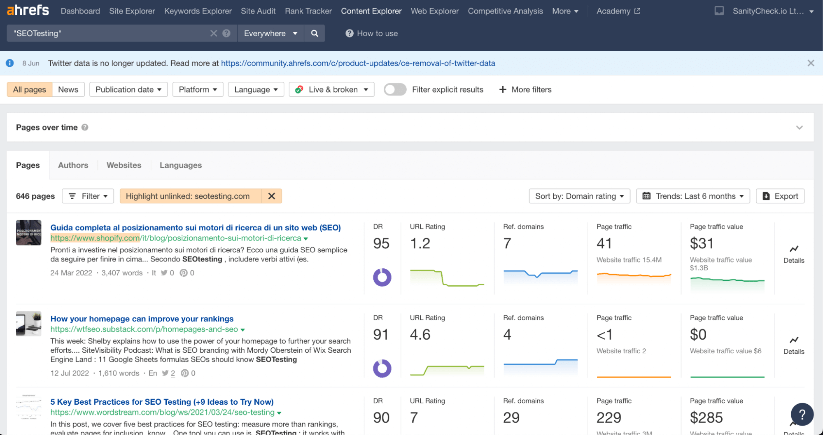
You can see from the website above that Shopify has mentioned our brand, SEOTesting, but has not linked to our website. We'll now reach out to them and ask for a link, given they have already mentioned our brand.
Win Back your Lost Backlinks
Winning back your lost backlinks is a crucial part of this SEO checklist. These are backlinks you have acquired previously, through whatever method, which have now been lost. In theory, these should be easier to gain back.
You can find backlinks you have lost using Ahrefs.
Head to your dashboard, and on the left-hand side toolbar you will see the "lost" section under your "backlinks" tab. This screen will look like this:
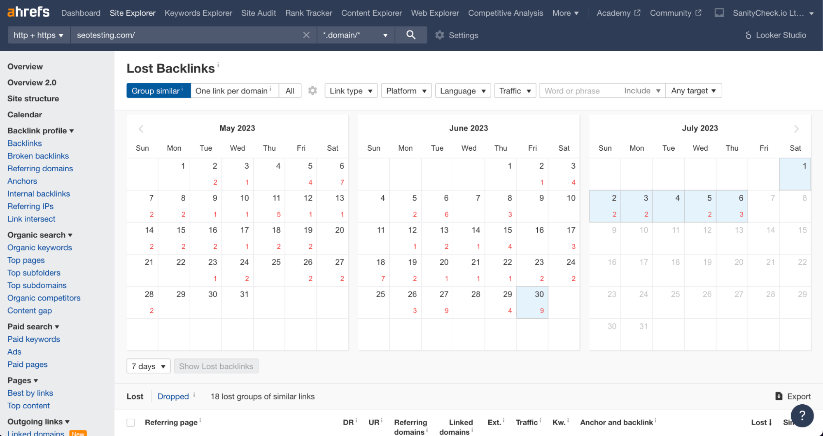
Here, you can set your date and find all of the backlinks you have lost over that period.
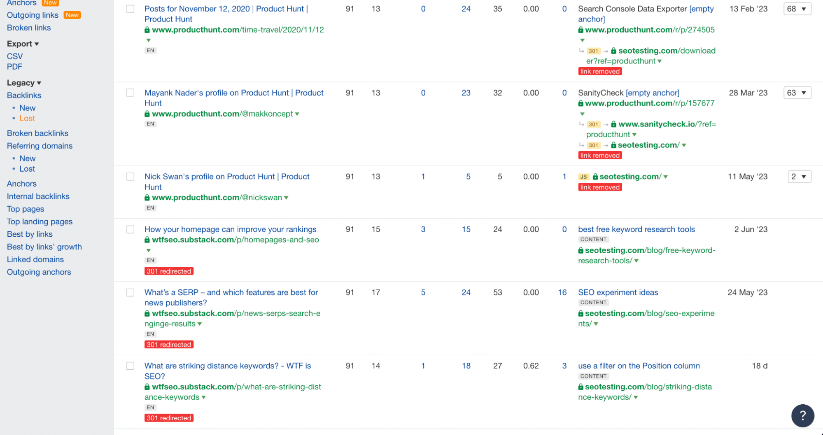
Ahrefs will also show you the reason these links have appeared in the lost backlinks report. Some backlinks have been lost due to the site linking to you being 301 redirected, whereas some links have been lost due to the links being removed from the website. These are the ones you would reach out to and ask for the link to be reinstated. Or, at least, ask why the link was removed.
Link Acquisition
Once you have exhausted all of the above quick wins, you now need to move on to link acquisition. This is the process of outreaching website owners and webmasters and asking them to link to your website.
Obviously... You cannot just email website owners and ask them to link to your website. You can, but your hit rate is going to be incredibly low. You may also find that the links you get are not authoritative and irrelevant to your website.
You need to offer something in return, to incentivise website owners to link to you. Some site owners will ask for payment, but this is against Google's regulations and we do not advise this. This is known as a "black hat" SEO technique.
You can use a few different methods here. Our favourite is the skyscraper method. This is where you aim to create a class-leading piece of content, which you should be aiming to do anyway as this is going to provide the best value for your readers and website users, and then reach out to websites that have linked to competing pieces asking them to link to your website instead.
There are other methods you can use. You can spend time finding and reporting on industry statistics, these always do well when it comes to link acquisition as you can update any out-of-date statistics and reach out to websites that have linked through to out-of-date pieces.
And there we have it. The full SEO checklist that we have used to improve our traffic by 141% in 2024, so far! We're going to be using this checklist more this year, and we will report back at the end of the year with how we have done.
If you are interested in supercharging your Google Search Console data, check out SEOTesting. Click here for a free, 14-day free trial with no credit card requirement.

